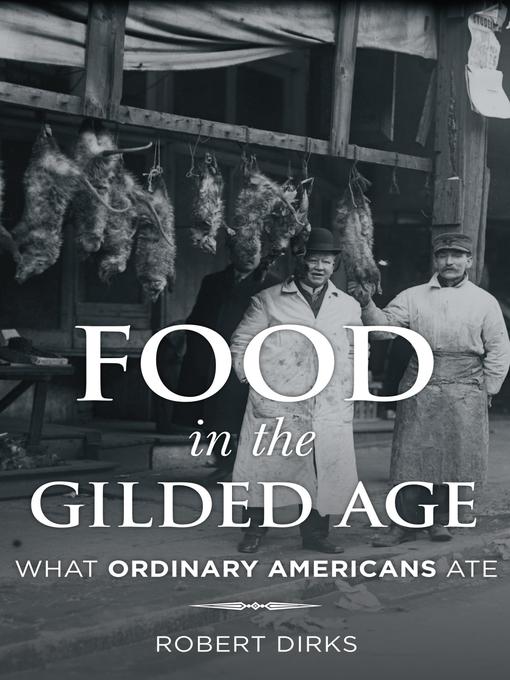This book delves into the eating habits of people of lesser means. Concerning the African American community, the working class, the impoverished, immigrants, and others our historical representations have been relatively superficial. The author changes that by turning to the late nineteenth century's infant science of nutrition for a look at eating and drinking through the lens of the earliest food consumption studies conducted in the United States. These were undertaken by scientists, mostly chemists, who left their laboratories to observe food consumption in kitchens, dining rooms, and various institutional settings. Their insistence on careful measurement resulted in a substantial body of detailed reports on the eating habits of ordinary people. This work sheds new light on what most Americans were cooking and eating during the Gilded Age.
-
Creators
-
Series
-
Publisher
-
Release date
April 14, 2016 -
Formats
-
Kindle Book
-
OverDrive Read
- ISBN: 9781442245143
- File size: 8153 KB
-
EPUB ebook
- ISBN: 9781442245143
- File size: 8153 KB
-
-
Languages
- English
-
Reviews
-
Publisher's Weekly
June 6, 2016
This revealing survey of the dining habits of Americans with modest means will satisfy foodies of every category. The Gilded Age refers to the eating contrasts of the rich and poor, but Dirks, emeritus professor of anthropology at Illinois State University, also details how region and race influences both the culinary and nutritional traditions of people across class lines, such as the diets of Mexican-Americans, Appalachian mountain folk, and African-Americans in the South. The seasonality of food, as Dirks explains, is assured on the dinner tables of upper- and -middle-class households because of items grown both locally and internationally, while the poor often endure a lesser quality of consumables sometimes trucked to economically disadvantaged grocery outlets. He contrasts immigrants' traditional dishes with the food of their adopted home, noting that the newcomers frequently preserve their recipes' integrity and avoid domestic products. Informed, accessible, and devoid of editorial comment, Dirks's book of nutrition of "ordinary" Americans at the close of the 19th century is a powerful blueprint of our many national cuisines. -
Booklist
July 1, 2016
This excellent microhistory looks at foods and cooking circa 18701900. The narrative travels to various parts of the U.S., including New Mexico and Appalachia, from big cities and small towns. A variety of immigrant groups are profiled, along with the differences between classes (the middle-class favored simple home cooking; the lower class was felled every year by the pellagra season and other problems stemming from the seasonality of produce). Photos add interest, and there are historical recipes, including Indian puddings and chow-chow. Not only a good reference on the time period, this work will also be of general interest to history buffs and foodies.(Reprinted with permission of Booklist, copyright 2016, American Library Association.)
-
Formats
- Kindle Book
- OverDrive Read
- EPUB ebook
subjects
Languages
- English
Loading
Why is availability limited?
×Availability can change throughout the month based on the library's budget. You can still place a hold on the title, and your hold will be automatically filled as soon as the title is available again.
The Kindle Book format for this title is not supported on:
×Read-along ebook
×The OverDrive Read format of this ebook has professional narration that plays while you read in your browser. Learn more here.


